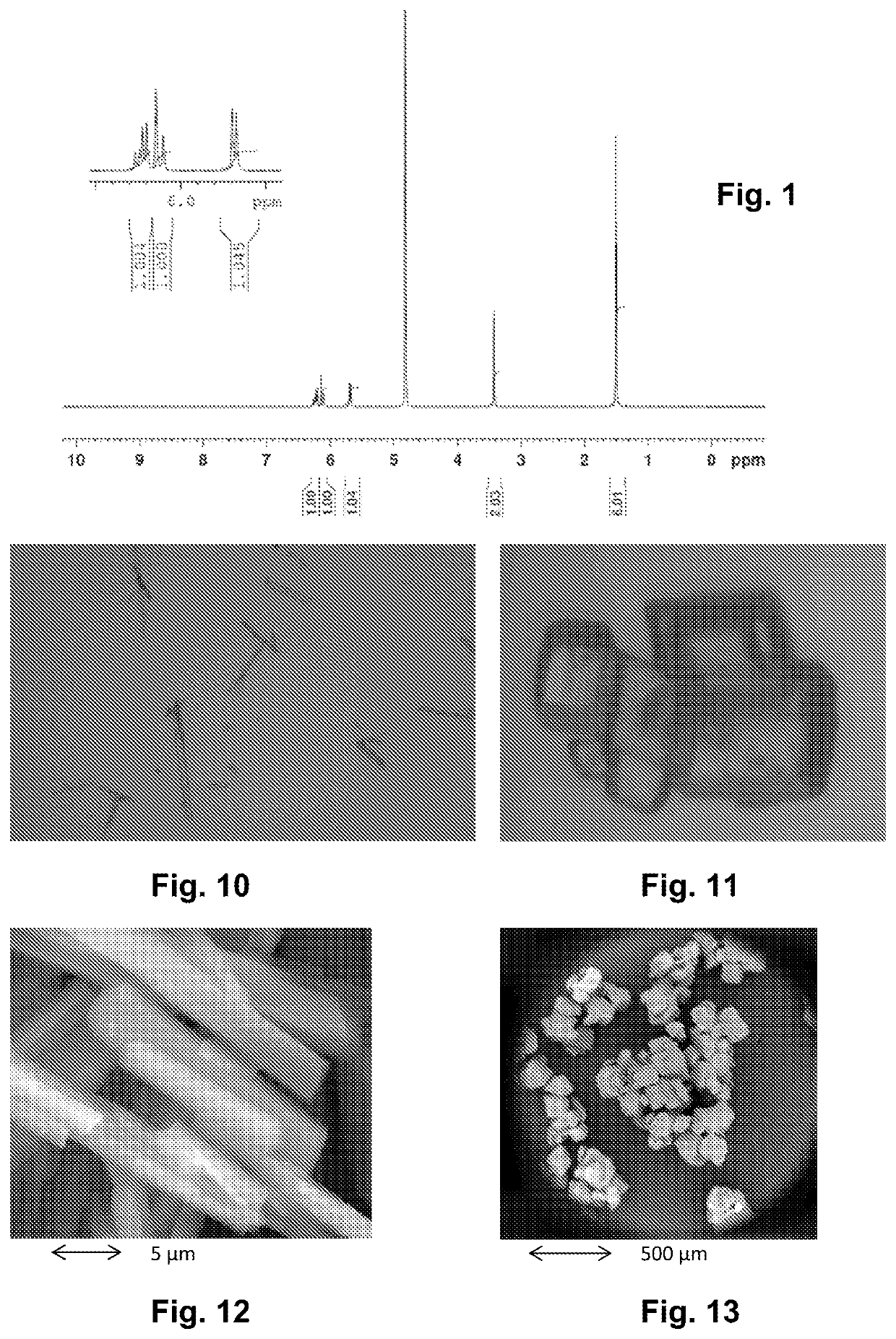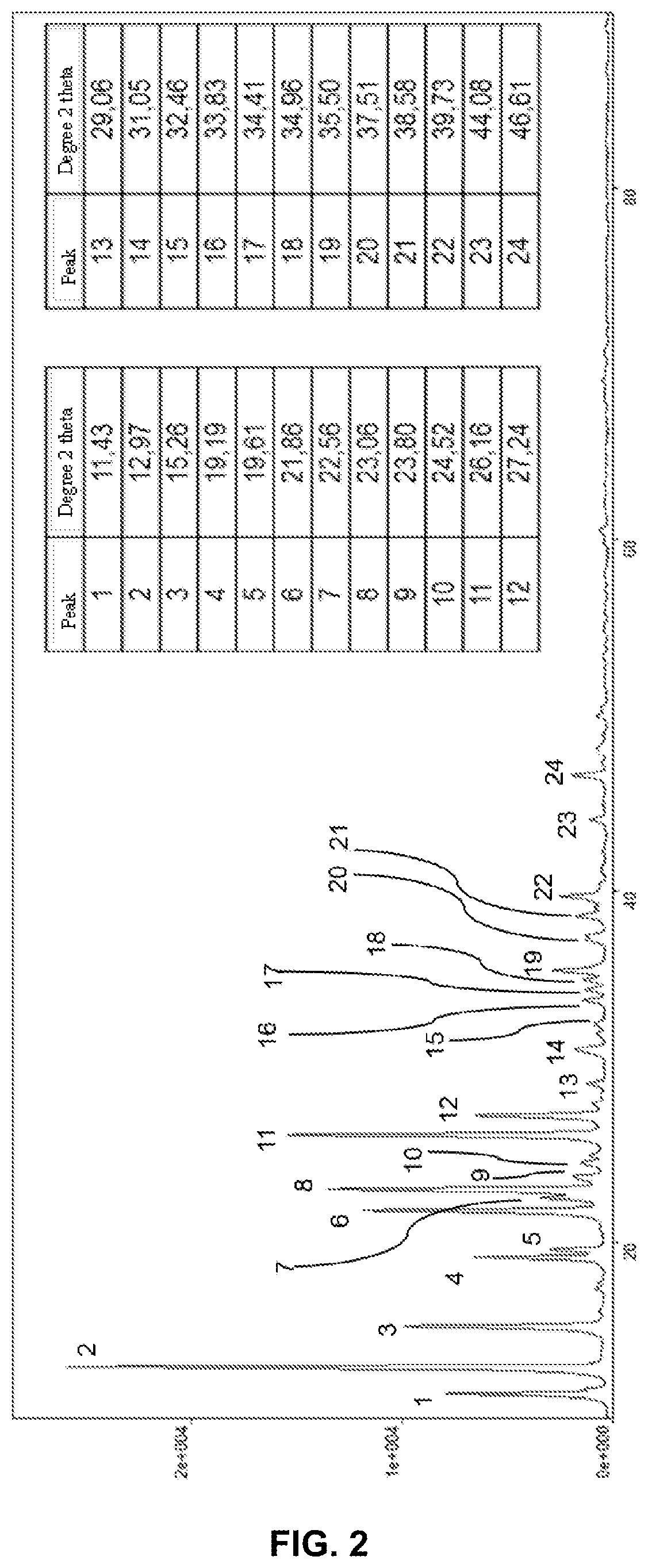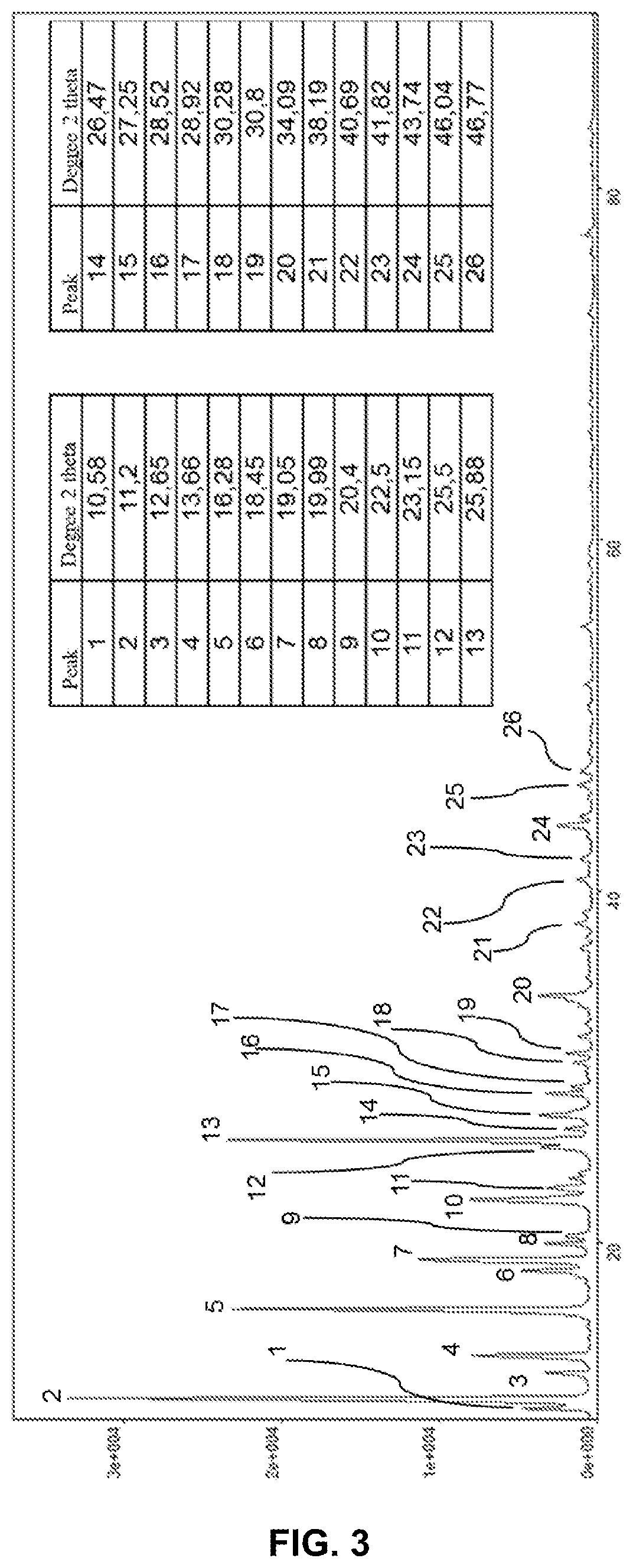Hydrated crystalline form of 2-acrylamido-2-methylpropane sulfonic acid
a technology of 2acrylamido-2-methylpropane sulfonic acid and crystalline form, which is applied in the direction of quarries waste water treatment, organic chemistry, borehole/well accessories, etc., can solve the problems of difficult drying, low crystal particle size of needle-shaped crystals, and poor filterability, and achieve enhanced oil and gas recovery
- Summary
- Abstract
- Description
- Claims
- Application Information
AI Technical Summary
Benefits of technology
Problems solved by technology
Method used
Image
Examples
example 1
of 2-acrylamido-2-methylpropane sulfonic acid
[0194]To a stirred 2000-mL jacketed reactor, 1522 grams of acrylonitrile was added containing 0.4% of water by weight and 180 grams of fuming sulfuric acid titrating at 104% H2SO4 (18% Oleum). The mixture was stirred for 1 hour and cooled via the reactor jacket, which held the temperature of the sulfonating mixture at −20° C.
[0195]To the previous sulfonating mixture, 97 grams of isobutylene was added, at a flow rate of 1.6 grams / minute.
[0196]The temperature of the mixture was controlled at 45° C. while isobutylene was added. The particles of 2-acrylamido-2-methylpropane sulfonic acid precipitate in the mixture and the solid content was about 20% by weight. The reaction mixture was filtered on a Büchner filter and dried under vacuum at 50° C. The solid obtained was 2-acrylamido-2-methylpropane sulfonic acid; it was present in the form of a very fine white powder.
[0197]From observations made with an optical microscope (FIG. 10) and a scanni...
example 2
of the Hydrated Crystalline Form of 2-acrylamido-2-methylpropane sulfonic acid
[0198]To a 2000-mL jacketed reactor, 500 grams of 2-acrylamido-2-methylpropane sulfonic acid obtained in example 1 and 460 grams of sulfuric acid at a concentration of 10% H2SO4 were added.
[0199]250 mg of 4-hydroxy-2,2,6,6-tetramethylpiperidin-1-oxyl was added to the preceding mixture.
[0200]The mixture was stirred for 10 minutes, at 20° C., to form suspension A.
[0201]Suspension A was heated to a temperature of 60° C. and maintained at this temperature for 20 minutes to form solution B.
[0202]Solution B was cooled to a temperature of 10° C. The cooling time between 60° C. and 10° C. was 6 hours. Suspension C of crystals of 2-acrylamido-2-methylpropane sulfonic acid was obtained. Suspension C was filtered on a vertical Robatel centrifugal dryer. A solid of composition 1 was obtained, containing 80% by weight of 2-acrylamido-2-methylpropane sulfonic acid crystals.
[0203]From observations made with an optical mi...
example 3
sis of Products from Examples 1 and 2
[0204]The 2-acrylamido-2-methylpropane sulfonic solid obtained in example 1 and its hydrated crystalline form obtained in example 2 were analyzed by proton nuclear magnetic resonance (NMR).
[0205]The samples were dissolved in D2O. The Bruker NMR machine had a frequency of 400 MHz, and was equipped with a 5 mm BBO BB-1H probe.
[0206]The two proton spectra (FIG. 1) were identical and the peak assignments conformed to the molecular structure of 2-acrylamido-2-methylpropane sulfonic acid.
PUM
| Property | Measurement | Unit |
|---|---|---|
| ignition energy | aaaaa | aaaaa |
| molar ratio | aaaaa | aaaaa |
| temperature | aaaaa | aaaaa |
Abstract
Description
Claims
Application Information
 Login to View More
Login to View More - R&D
- Intellectual Property
- Life Sciences
- Materials
- Tech Scout
- Unparalleled Data Quality
- Higher Quality Content
- 60% Fewer Hallucinations
Browse by: Latest US Patents, China's latest patents, Technical Efficacy Thesaurus, Application Domain, Technology Topic, Popular Technical Reports.
© 2025 PatSnap. All rights reserved.Legal|Privacy policy|Modern Slavery Act Transparency Statement|Sitemap|About US| Contact US: help@patsnap.com



